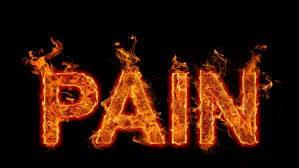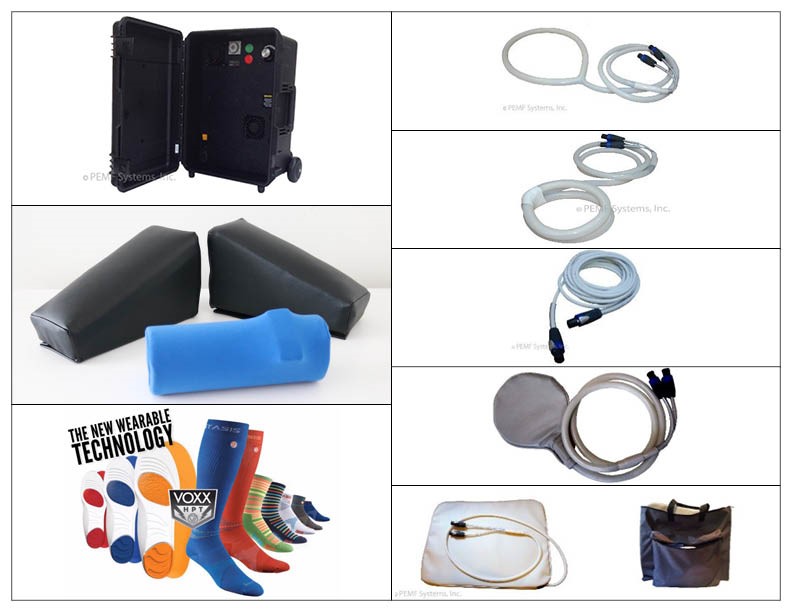PEMF for Pain

One of the most significant effects of PEMF therapy is the improvement of painful conditions regardless of their origin. This is borne out in the prevalence of Pain-related PEMF Studies (191 as of October 2025) referenced on RTI’s lookup research page.
Pain mechanisms are complex and have peripheral and central nervous system aspects.
- directly in the form of neuron firing, calcium ion movement, membrane potentials, endorphin levels, nitric oxide, dopamine levels, acupuncture actions and nerve regeneration and
- indirectly through improved circulation, improved tissue oxygenation, muscle relaxation, reduced edema, reduced inflammation, enhanced cellular healing mechanisms, prostaglandins, improved cellular metabolism and higher cell energy levels.

- 95% of people report less pain, better range of motion (ROM), more energy and a greater sense of well-being after one HIGH Powered PEMF session.
- Most hold the improvement for 4 hours to 4 days.
- Repeat use typically extends the period of benefits.
The short-term effects relate to decreased cortisol and noradrenaline coupled with an increase in serotonin, endorphins and enkephalins.
Longer term effects relate to Central Nervous System (CNS) as well as peripheral nervous system biochemical and neuronal effects through which pain messages are altered and not just masked like medications do.
PEMF therapy treats inflamed and painful areas safely and with no known undesirable side effects or down time. The magnetic pulses penetrate the tissue layers and induce muscle relaxation, lower nerve irritability as well as stimulate blood and lymph circulation.


In doing so, PEMF therapy reduces pain, swelling and inflammation, enhances cellular repair, stimulates ATP production, promotes cellular and nerve regeneration, strengthens bones, accelerates fracture repair and speeds up recovery.
Common pain-related uses of PEMF include but are not limited to:
- Arthritis/osteoarthritis
- Back, Joint, Muscles
- Post-surgical
- Injury
- Nerve
- Sciatica
- Neuropathy
- Fibromyalgia
Here are the findings of a number of studies:

- after first month of PEMF seventy-three percent (73%) of the active group reported decreased headaches of which 45% a substantial decrease and 14% an excellent decrease.
- Half the active group received two additional weeks of treatment. All showed decreased headache activity with 50% a substantial decrease and 38% an excellent decrease.
- Researchers concluded that PEMF treatment for at least 3 weeks is an effective, short -term intervention for migraine.
- Ninety percent (90%) experienced marked, even dramatic relief, while 10% reported less than complete pain.
- Unusually effective and long - lasting relief of pelvic pain of gynecological origin has been obtained consistently by short exposures of affected areas to the application of a magnetic induction device.
- Treatments are short, fast-acting, economical, and in many instances have obviated surgery.
- Postoperative pain may be experienced after breast augmentation surgery despite advances in surgical techniques that minimize trauma.
- The use of pharmacological analgesics and narcotics may have undesirable side effects that can add to patient morbidity.
- Postoperative pain data showed pain had decreased in the treated group by nearly a factor of three times that of the control group.
- Patient use of postoperative pain medication also decreased nearly three times faster in the active versus the control group.
- Researcher concluded: Pulsed electro-magnetic field therapy, adjunctive to standard of care, can provide pain control with a non-invasive modality and reduce morbidity due to pain medication after breast augmentation surgery.
- This test compared the results of 3 Groups the first using an actual PEMF, the second a placebo PEMF, and the third a corticosteroid + anesthetic agent injection.
- A visual analog scale was used to assess pain levels during nighttime, rest and activity. Resistance in wrist dorsiflexion and forearm supination were investigated. Pain threshold on elbow was determined with an Algometer.
- All patients were evaluated before treatment, at the third week and the third month.
- Pain levels were significantly lower in the steroid group at the third week but at the third month, the PEMF group had lower pain during nighttime, rest and activity than the group receiving local steroids.
- Patients were treated for 6 weeks.
- Seventy-six percent (76%) showed a reduction in numbness and tingling.
- All patients experienced pain reduction.
- Sixty-six percent (66%) reported being totally pain-free.
- 3,000 patients followed over 11 years.
- Pain control, recovery of joint mobility and maintenance of the improved conditions were evaluated as good or poor.
- The chi- square test was applied to eliminate casual results.
- An average value of seventy-eight percent (78%) showed good results versus twenty-one percent (21%) had poor results.
- Researchers concluded that PEMF treatment is an excellent physical therapy for joint diseases with no undesired side -effects and hypothesized that external magnetic field may influence trans-membrane ionic activity.
- A combination of static and time-varying dynamic magnetic field stimulation was applied on the wrist.
- Researchers concluded PEMF exposure in refractory carpal tunnel syndrome provides statistically significant short-term and long-term pain reduction and mild improvement in objective neuronal functions.
- Study objective was to review the major scientific breakthroughs and current understanding of the mechanism of action of PEMF therapy… The results show that PEMF therapy has been used successfully in the management of postsurgical pain and edema, the treatment of chronic wounds, and in facilitating vasodilatation and angiogenesis… non-invasive with no pharmacologic management, no known side effects … what has been of most significance to the plastic surgeon is the laboratory and clinical confirmation of decreased pain and swelling following injury or surgery.
RTI’s proprietary Whole Body (neurological, metabolic and spinal) Protocols specifically work all areas, organs and systems of the body creating a systemic improvement phenomenon that has broad application to healing.
RTI protocols also include specific rehab protocols for joints, the back, the spine and body systems incorporating complementary tools (like Pelvic Correction Technique from our Replenishing Care Model) to amplify the benefits of PEMF.


